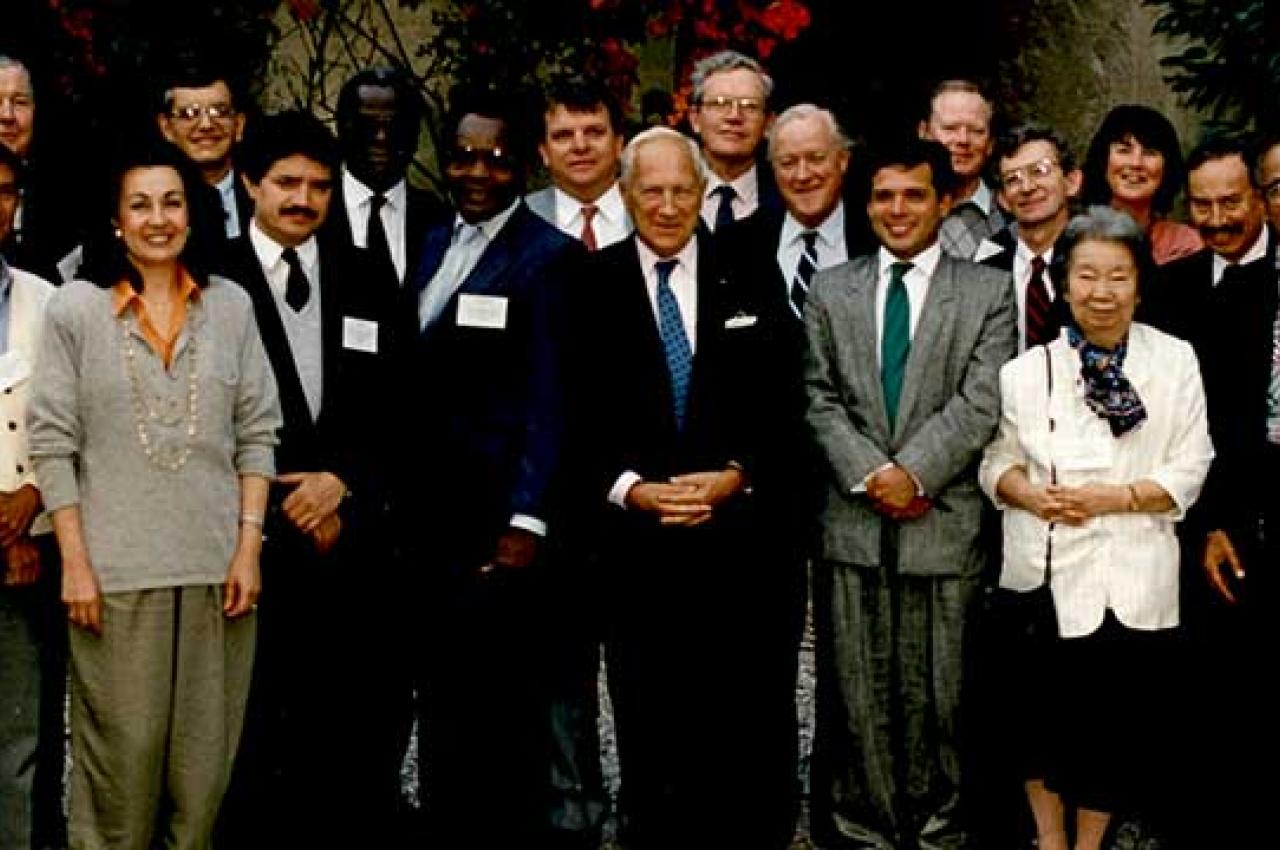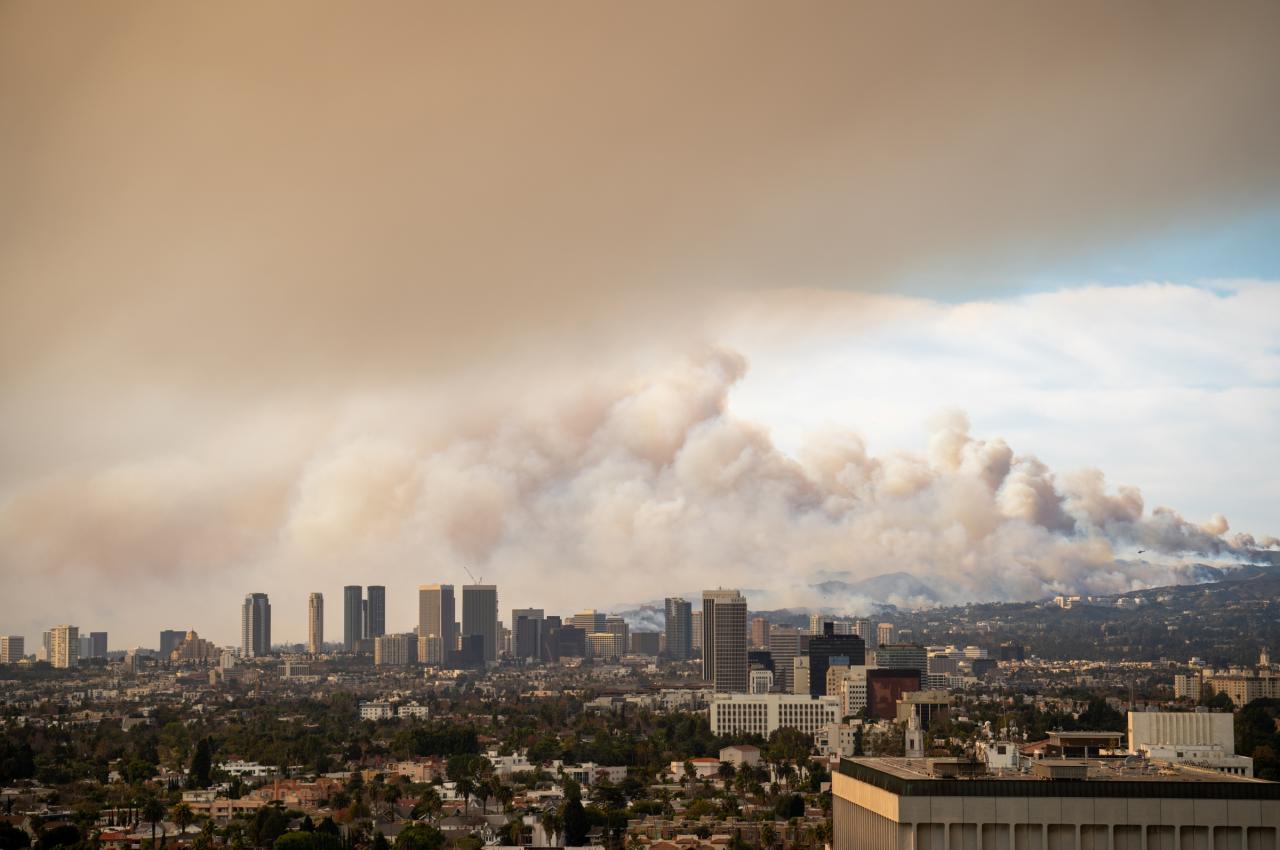A Tufts-Led, Historic Commitment to Sustainability
Thirty-five years ago, sustainability wasn’t even on the agenda of many higher education leaders. But, working with former Massachusetts Commissioner of Environmental Protection Tony Cortese, E68, EG72, Tufts President Jean Mayer decided to change that.
In October 1990, he convened 22 university presidents and chancellors from 13 countries at the Tufts European Center in Talloires, France. Over three days they discussed how their roles could intersect with a planetary imperative: the need for interdisciplinary approaches to environmental management and sustainable development.
To address their concerns, the leaders committed to integrating sustainability into their institutions’ teaching, research, and operations. On Sunday, October 7, their talks culminated with the signing of the Talloires Declaration of University Leaders for a Sustainable Future. Its language was unequivocal: “We human beings have become a danger to ourselves. We must act in time.”
Since then, the declaration has gained a global following. Today more than 500 university presidents and chancellors from 50 countries have committed to its 10-point action plan to integrate the principles and practice of sustainability into the core of their institutions.
To commemorate the 35th anniversary of the declaration, Tufts Now spoke with William Moomaw, professor emeritus of international environmental policy at The Fletcher School, about its legacy and staying power.
Moomaw is a climate and environmental scientist who had just arrived at Tufts in late 1989 to direct the Tufts Center for Environmental Management, an environmental research center founded by Cortese. Moomaw had been active in climate change solutions—an important component of sustainable development on the global stage—and had co-authored several reports for the United Nations Intergovernmental Panel on Climate Change. As a faculty member at The Fletcher School, he founded the Center for International Environment and Resource Policy, the university-wide Tufts Institute of the Environment, and the Tufts Climate Initiative (now part of the Office of Sustainability). He also co-founded the Global Development and Environment Institute.
How was the Talloires Declaration a product of its time?
The major influence was the 1987 United Nations report Our Common Future, which identified the new concept of sustainability and the path of sustainable development. At the time it was very radical because it demonstrated that the environment and the economy were mutually supportive rather than in conflict with each other. It defined the three pillars of sustainable development—the environment, the economy, and society—as complementary and mutually supportive.
Before, it was a given that there was always a tradeoff between the environment and economics. But the report disrupted that whole paradigm and got people thinking. And who quickly tuned into that way of thinking? People at universities, people in departments like engineering and diplomacy and agriculture and food and health and animal health. They all saw that they could have a role to play in sustainability.
At Tufts, that thinking suited our complement of schools, but we were already collaborative around environmental issues. In 1984, Tufts started the Environmental Studies Program, one of the first multidisciplinary environmental programs in the United States, and it launched the Tufts Center for Environmental Management, which conducted applied environmental research. In 1990, Tufts created the Tufts Environmental Literacy Institute, a workshop that brought together faculty from across multiple disciplines. Professors Richard Vogel and Shafik Islam also reached out to faculty in other schools to create inter-school water programs incorporating science, engineering and policy, including an NSF-funded Ph.D. degree.
And most relevant to the enduring success of the declaration is the fact that President Mayer appointed Tony as Tufts Environmental Program Dean. Tony, an exemplary champion of sustainability, incorporated Our Common Future concepts and language when it came to drafting the Talloires Declaration.
The report accompanying the declaration notes the vital role of university presidents for “converging all the academic disciplines and professional schools on large, complex issues.” Did that idea reflect the Jean Mayer presidency?
Jean Mayer was a visionary on that front. It’s what makes the declaration so prophetic and so profound. His expansive vision for Tufts included creating one of the few schools of nutrition at universities in the United States and starting a veterinary school. He transitioned Tufts into the university it is today. He wanted to implement ideas.
The declaration, similarly, was not going to be just a bunch of words. Jean Mayer was very insightful. He felt that if he and a group of university presidents were to sign a statement about sustainable development, it would imply that this was real and it was especially important to universities. They were going to make their universities models of sustainable institutions and they were going to show the country how that could be done.
Why has the declaration had such staying power over the decades?
It’s an action plan, not rhetoric. It broadly says: Here are the goals. You figure out how you're going to do it. It is asking that you make a commitment to the why, so it avoids becoming obsolete. It can continually evolve, and it has, as heads of universities reckon with how they want to achieve the plan.
The declaration presents a challenge with high aspirations. It calls for creating “an equitable and sustainable future for all humankind in harmony with nature.” What has it achieved?
It has put university presidents on notice. Some have followed its direction better than others, but for many, it’s a motivator. It carries weight. The Talloires Declaration is an important roadmap that, at the highest level, inspires hope and optimism. The Declaration asks us to imagine several hundred universities all traveling in the same direction and educating future generations through their example to think sustainably across academics, research, and operations.
What would you like to see going forward?
Many of us who have been around a while would like to see a recommitment to the original spirit of the document. We've learned a lot, and we can continue to learn. Mutually observing what other universities are doing, we can ask: Why aren't we all doing that too?
As we go forward, it our hope that we can focus on the mutual reinforcement among universities to find sustainable solutions that bring resources and people together, to create sustainable pathways for our universities and for the world beyond with a renewed sense of urgency.
Latest Tufts Now
- How Rural Women Advance India’s Sustainable FutureAjaita Shah’s innovative “tech + trust” model has built a network of women entrepreneurs
- New Thriller Blurs Lines Between Good Guys and VillainsAction comedy by Elliot Ackerman blends humor with serious themes, and is headed for Apple TV
- Recognizing Job Burnout and What to Do About ItThe most effective solution to burnout at work is employee-focused organizational change, says Tufts expert
- Wildfire Smoke Is Obvious. Its Long-Term Health Impacts Are NotA School of Medicine expert and an alum share what’s needed to better understand how wildfire smoke, both wildland and urban, impacts our health
- Working Toward Reducing Chemical Industry Dependence on PetroleumTufts researchers receive up to $4.5 million from DARPA to create robust, flexible biosynthetic manufacturing
- Does Climate Change Lead to Conflict?Tufts researcher shows connection between low rainfall and the outbreak of civil wars between African pastoralists and farmers













